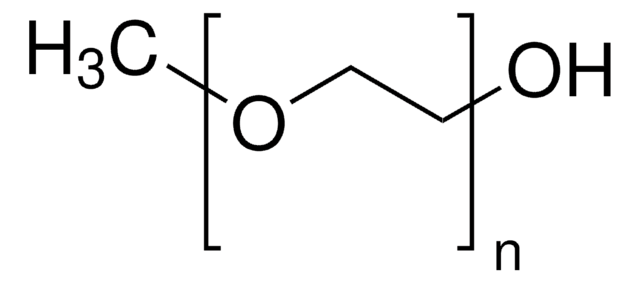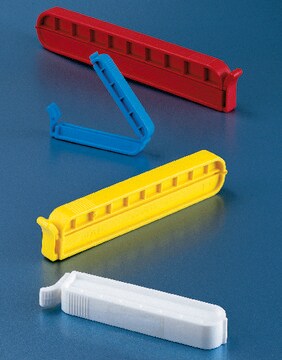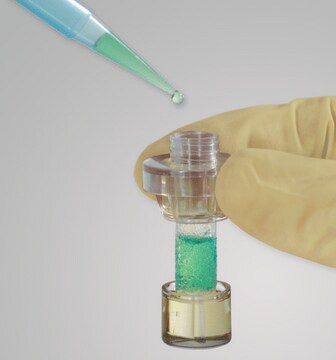88908
Methoxypolyethylene glycol 5,000 propionic acid
≥80%
Sinonimo/i:
Polyethylene glycol, O-(2-Carboxyethyl)-O′-methylpolyethylene glycol 5,000, mono-Methyl polyethylene glycol 5′000 propionic acid
About This Item
Prodotti consigliati
Saggio
≥80%
Forma fisica
lumps
Estremità Ω
carboxylic acid
Estremità α
methoxy
Temperatura di conservazione
−20°C
Applicazioni
Codice della classe di stoccaggio
11 - Combustible Solids
Classe di pericolosità dell'acqua (WGK)
WGK 3
Punto d’infiammabilità (°F)
Not applicable
Punto d’infiammabilità (°C)
Not applicable
Dispositivi di protezione individuale
Eyeshields, Gloves, type N95 (US)
Certificati d'analisi (COA)
Cerca il Certificati d'analisi (COA) digitando il numero di lotto/batch corrispondente. I numeri di lotto o di batch sono stampati sull'etichetta dei prodotti dopo la parola ‘Lotto’ o ‘Batch’.
Possiedi già questo prodotto?
I documenti relativi ai prodotti acquistati recentemente sono disponibili nell’Archivio dei documenti.
I clienti hanno visto anche
Articoli
Professor Randal Lee (University of Houston, USA) discusses design considerations for iron oxide magnetic nanospheres and nanocubes used for biosensing, including synthetic procedures, size, and shape. The effects of these variables are discussed for various volumetric-based and surface-based detection schemes.
Kanjiro Miyata (The University of Tokyo, Japan) provides insights on the rational design of polymeric materials for “smart” oligonucleotide delivery.
Il team dei nostri ricercatori vanta grande esperienza in tutte le aree della ricerca quali Life Science, scienza dei materiali, sintesi chimica, cromatografia, discipline analitiche, ecc..
Contatta l'Assistenza Tecnica.







![O-[(N-Succinimidyl)succinyl-aminoethyl]-O′-methylpolyethylene glycol average Mn 750](/deepweb/assets/sigmaaldrich/product/structures/244/886/c80fd8d8-9a62-4a97-be17-32d83ffd1dfb/640/c80fd8d8-9a62-4a97-be17-32d83ffd1dfb.png)
